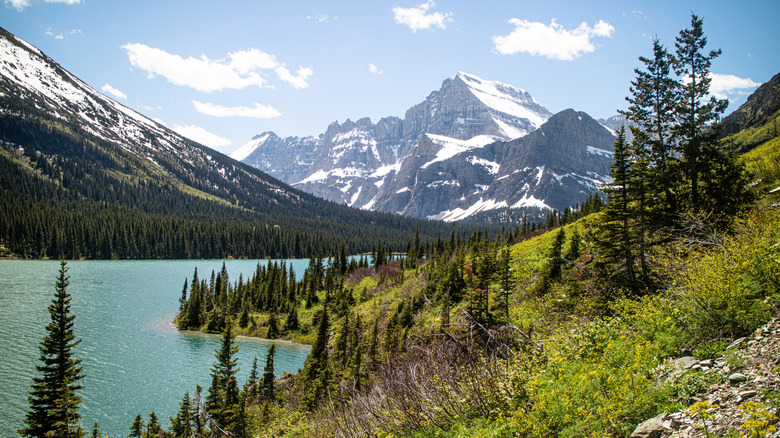Science Has Figured Out The Perfect, Most Efficient Road Trip Route Across America
For hundreds of years, we've relied on science to solve some of the universe's greatest mysteries. Through science, we discovered that our planet revolves around the sun (and not vice versa), that our species has undergone thousands of years of evolution and, heck, that visiting the moon was more than just a dream. Well, now science has paved the way to the perfect American road trip. For anyone who ever wondered about the most effective way to go on a road trip that hits all 48 contiguous states, a data scientist has come to the rescue. The best part is you can start anywhere, whether it be New York, South Dakota, or Florida. And, as long as you follow the map, you can visit 50 national monuments.
Dr. Randal S. Olson, the mastermind behind this idea, was working as a graduate research assistant at Michigan State University when this idea struck him. He made a list of 50 major historical landmarks, sites, and monuments and used a genetic algorithm to generate the route with the shortest distance between each landmark, which resulted in a stretch of about 13,700 miles. So borrow, rent, or bring your own car and fill up the gas tank, because you'll be heading down the highway for some considerable time on this epic journey.
The open road has no limits
The route takes an estimated 244 hours of continuous driving and Dr. Olson predicts that this should take two to three months to achieve. The full loop would make for some great Polaroids, beautiful memories, and one hell of a playlist. Although you can start the route from anywhere, why not begin somewhere spectacular like the Grand Canyon?
After the first gargantuan pitstop, drive over to Bryce Canyon National Park, Utah — not as famous as its counterpart, but equally impressive. Here, you can marvel at the impressive red-rock valleys, contrasted by forest scenery. It's a geological wonder that looks like something out of this world. At night, the clear skies over Bryce Canyon light up with thousands of stars. So this is a great place to take a camping break to avoid driving too many hours in a row.
Your drive will take you through some incredible scenery in Idaho, Wyoming, Colorado, and New Mexico. Once you get to Texas you can soak up some American history at The Alamo then cruise through Oklahoma, Arkansas, and over to Tennessee, where you can visit Graceland. The mansion was once owned by The King, Elvis Presley, so make sure you stop and pay your respects to one of the best to ever do it. For quite the change of scenery, a few states down the line you'll reach the French Quarter, located in the heart of New Orleans. The crown jewel of the city, the French Quarter isn't just a must-see during yearly Mardi Gras celebrations, as it boasts jazz and great food year-round.
America's created and natural wonders
At the halfway mark you'll arrive in New York, with the national monument on this part of the map being the Statue of Liberty, an iconic beacon of hope for generations of immigrants. Even if you've visited the Big Apple before, you'll probably want to do some sightseeing and eating before moving on, New York City isn't exactly a quick pit stop. A few stops beyond, you'll reach the Fox Theatre Detroit, in the Motor City. Built in 1928, the venue can hold over 5,000 guests, and hosts some of the biggest names in entertainment, from comedian Kevin Hart to the hypnotic Cirque du Soleil.
Stop at Spring Grove Cemetery in Ohio and Mammoth Cave National Park in Kentucky, and keep driving till you get to Abraham Lincoln's home in Illinois. In Montana, you'll find Glacier National Park, a breathtaking wonder that's earned the nickname the "Crown of the Continent." Here you'll find hundreds of miles of trails and lakes and have a chance to learn about Indigenous ties to the land.
If you started at the Grand Canyon, the last stop on your epic journey is the Hoover Dam, one of America's most impressive works of engineering. Five years in the making, this monolithic project was built during the Great Depression and bridges a section of the Colorado River between Nevada and Arizona. It provides water to more than 16 million people. Of course, the open road has no shortage of unique motels to stay at, with some just as much of a talking point as these national monuments. If you think you can stomach three whole months on the open road, you can find the map and list of stops on Dr. Olson's site. It'll undoubtedly be worth it.


